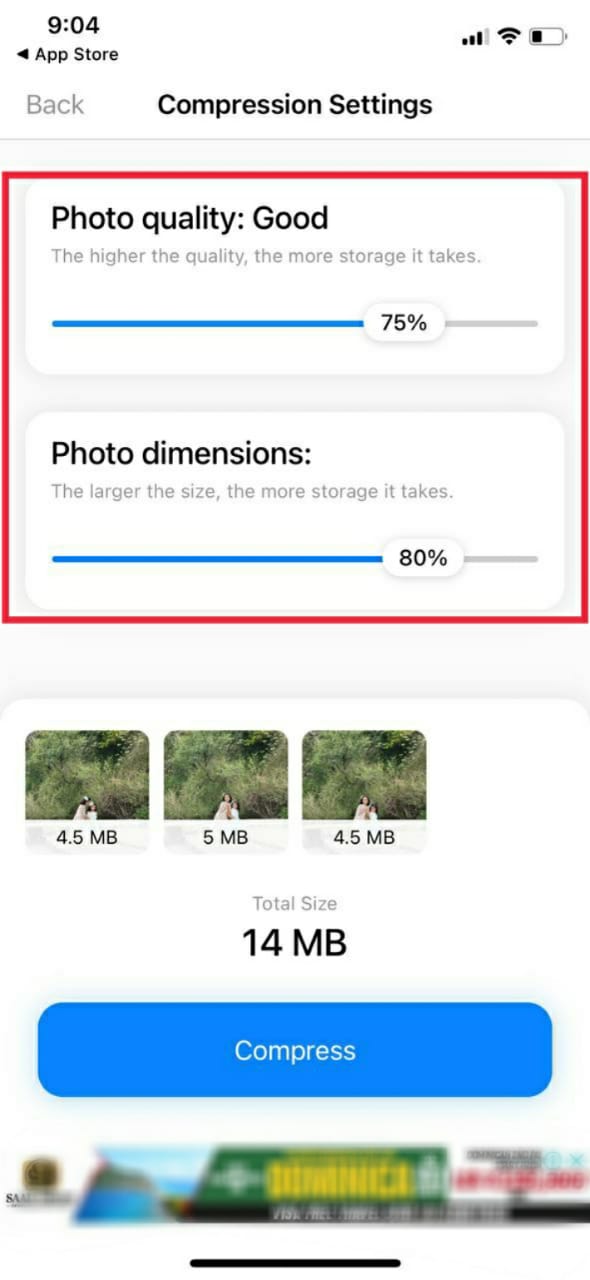

- #How to compress picture files for storage how to
- #How to compress picture files for storage install
Instance = ImageModel() instance.image = inmemory_uploaded_file instance.save() return render(request, 'blog/upload_image.html', data) Inmemory_uploaded_file = InMemoryUploadedFile(thumb_io, None, 'foo.jpeg', I.save(thumb_io, format='JPEG', quality=80) from blog.models import ImageModelįrom import InMemoryUploadedFileĭef upload_image(request): data = dict() if "GET" = thod: return render(request, 'blog/upload_image.html', data) # process POST request files = request.FILES # multivalued dict image = files.get( "image")

Read more about the InMemoryUploadedFile class and its parameters here. In the last line, we are converting the processed image back to the InMemoryUploadedFile type image. from io import BytesIO from PIL import Image from import InMemoryUploadedFile i = Image.open(image) thumb_io = BytesIO() i.save(thumb_io, format= 'JPEG', quality= 80) inmemory_uploaded_file = InMemoryUploadedFile(thumb_io, None, 'foo.jpeg', 'image/jpeg', thumb_io.tell(), None)
#How to compress picture files for storage install
pip install pillowįirst import the dependencies then open the image and then save it back with the desired quality level. Once the virtual environment is active, install the pillow python package in it. We strongly recommend using a virtual environment to run your Django application. Instance = ImageModel() instance.image = image instance.save() return render(request, 'blog/upload_image.html', data) # compress the image here and then save it Getting file in view from blog.models import ImageModel def upload_image(request): data = dict() if "GET" = thod: return render(request, 'blog/upload_image.html', data) # process POST request files = request.FILES # multivalued dict image = files.get( "image")
#How to compress picture files for storage how to
In this article, we will see how to compress and image before storing it. Sometimes images are of large size and we want to compress them to save some space and to reduce the page load time where those images are being used. To publish an imagery layer from CRF data, follow these steps: Verify that you are signed in with an account that has privileges to create content and publish hosted imagery layers, and click the My Content tab of the content page.We already know how to upload the image file in Django, store it and use it in Django templates. You can publish cloud raster format (CRF) raster data as an imagery layer, whether it’s multidimensional or not. Choose ‘Basic Compression,’ and hit ‘Choose Option.’ On the next page, click ‘to JPG.’ How to publish imagery layer from cloud raster data? How to Compress a PNG Image Online Start with our Compress tool -upload your PNG. The lower the quality, the better the compression! Is there a way to compress a PNG image? Choose the quality you want your image to be saved in. Select an image format from the drop-down list. It can be an image, document or even a video. Upload your file to the image compressor. This is transmission compression and it is independent of storage compression. Compression can also be applied on image services when transmitting pixels from a server to client applications. The more highly compressed the raster, the longer it will take to decompress. When to use compression on a raster image? Illustrations and short texts are used to describe different methods of raster data storage and raster data compression techniques. What are the raster data compression techniques? Click OK, and name and save the compressed picture somewhere you can find it.Do one of the following: To compress your pictures for insertion into a document, under Resolution, click Print.Click the Picture Tools Format tab, and then click Compress Pictures.Select the picture you want to compress.How do I compress a picture to reduce file size? 6 How to publish imagery layer from cloud raster data?.5 Is there a way to compress a PNG image?.4 How can i compress an image for free?.3 When to use compression on a raster image?.



 0 kommentar(er)
0 kommentar(er)
